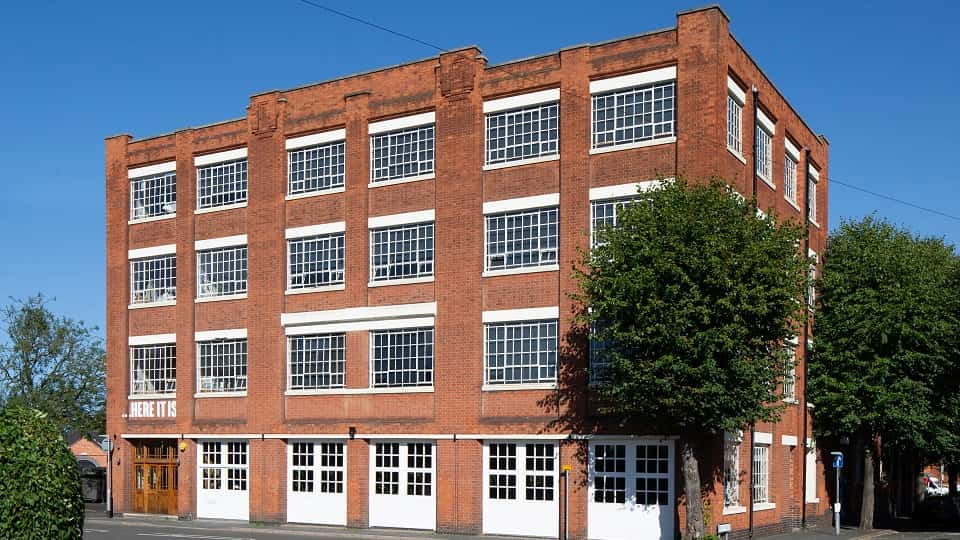The project combines original photography, textual and archival materials to examine the vital role art schools have played, and continue to play, in the cultural and economic life of our towns and cities.
The twin Victorian engines of industrial ambition and social reform powered the British art school system, which developed by the end of the nineteenth century into a complex network of institutions providing training and exposure to the arts to thousands of workers and students across the country. By the mid-1960s there were still over 150 art schools in the UK, by which time ‘art school’ had become shorthand for creative innovation across the arts, design, music and advertising. Yet at the peak of their influence on British cultural life, art schools in many towns and cities were already being amalgamated, reorganised and rebranded as part of a drive to reshape education in the arts. Most art schools have long since been absorbed into larger institutions, many of the buildings repurposed or demolished.
The Loughborough exhibition focuses on the impressive number of art schools located in the Midlands and features original photographic images of all 48 sites from across the region, from Hereford to Boston, Chesterfield to Northampton. A display of historical images and archival ephemera focusing on the history of Loughborough College of Art accompanies the exhibition.
Art education in Loughborough was entwined from the outset with the demands of local industry. The Government School of Art announced that classes would begin at the Board Schools, Cobden Street, in December 1881. By 1900, the School was operating from Church Gate and was integrated into the new Technical Institute in 1909, located on the first floor of the Institute building on the corner of Ashby Road and Greenclose Lane. The Institute became Loughborough College, incorporating the School of Art, in 1918, and a Junior School of Art opened in 1925 for students between 12 and 15.
After a number of name changes, including the School of Industrial and Fine Art and the School of Arts and Crafts, the School became Loughborough College of Art in 1951 and the following year was one of four institutions created by splitting Loughborough College. In 1966, the College of Art and Design, as it was now called, relocated to a site adjacent to Loughborough University. The College of Art and Design became an independent higher education institution in 1989, merging with the University in 1998.
Part of the College of Art’s Frederick Street building is being developed into The Generator, to continue its role as a creative hub for the town. A community interest company have, over a number of years, been working on the delivery of a long-held vision to turn the former art school into a creative hub with workspace, a café, a multimedia arts space for live performances and a venue for exhibitions, events and celebrations. The space will open to the public in 2025.
The exhibition aims to create a space for dialogue and debate, raising questions about the role of the arts and art education in relation to community, history, and identity, and the shifting complex role of cultural production and cultural labour in the contemporary environment.
John Beck and Matthew Cornford began researching the history and legacies of British art schools when they noticed that Great Yarmouth College of Art and Design, where they both studied in the early 1980s, was disused and for sale (it is now social housing). Emerging out of a series of talks and papers, the Art School Project currently takes the form of regionally oriented exhibitions that respond to the particularities of place. In the North West, they have shown in Liverpool, Bury and Rochdale, while in 2023 their work on the West and East Midlands was the focus of exhibitions at, respectively, the New Art Gallery Walsall and Bonington in Nottingham. John Beck teaches literature and visual culture at the University of Westminster (incorporating what was once Harrow School of Art), and Matthew Cornford teaches fine art at the University of Brighton (formerly Brighton School of Art).
The project is documented on Instagram.
The Loughborough exhibition is open from 16 May to 28 June, 12pm-2pm, Monday to Friday and is free to attend. Please note that the exhibition will be closed for the bank holiday on Monday 27 May.
Find out more about the exhibition including accessibility and parking information.
Artists John Beck and Matthew Cornford will discuss the Art School Project in a special event on campus on Wednesday 29 May, 1pm-2pm. They will be joined by Jill Vincent and Jonathan Hale who have been instrumental in the development of The Generator.
This will be an opportunity to not only learn more about the interesting histories of art schools across the UK, but also to hear about the exciting future for Loughborough’s former art school building.
Find out more and book your place for the Art School Project - In Conversation event.
